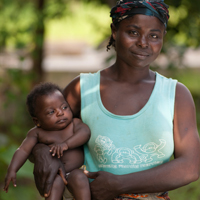
Total Awarded: $2.1 Million
Total Grants: 6
Duration: 2007 - Present
Geographic Focus: Ethiopia, Ghana, Nigeria
Background
Over the past decade, the MacArthur Foundation has been striving to reduce maternal mortality through its Population and Reproductive Health grantmaking initiative. In Ethiopia, Ghana, and Nigeria the incidence of maternal mortality due to postpartum hemorrhage is high, and many women still deliver at home. One promising approach to preventing postpartum hemorrhage where women have limited access to healthcare facilities is to give pregnant women misoprostol – an inexpensive pill that, when taken immediately after delivery, can reduce the risk of postpartum hemorrhage. The MacArthur Foundation invested in a package of grants designed to pilot and document the results of four different intervention models for increasing access to misoprostol at the community level, and to work towards national scale-up of the models identified as effective.
What We Evaluated
In 2014, the Foundation commissioned a team of external consultants to evaluate the grant portfolio in Ethiopia, Ghana, and Nigeria. Specifically, the purpose of the evaluation was to gain a better understanding of how the four intervention models were implemented, their effectiveness, and the extent to which successful pilot projects have been scaled up.
What We Learned
- Misoprostol can save lives in countries where women still deliver at home. Ensuring access to misoprostol at the community level can greatly assist governments in meeting their goals to reduce maternal mortality while they continue their efforts to strengthen healthcare facilities and increase facility deliveries.
- Among the community-based models evaluated, those that provided misoprostol to women in advance of birth were the most successful in ensuring that a uterotonic was available and used at the time of birth (whether at home or in a facility.) Advance distribution of misoprostol to women is the most successful intervention model, but mistrust has been stalling progress toward greater access.
- Of the models evaluated, those that were most successful at creating sustainable, scalable approaches for reaching rural women with misoprostol were the projects that embraced existing structures and access points to women. Three natural areas of connection to established systems are antenatal care services, community health and lay workers, and private sector pharmacies and patent medicine vendors.
- Efforts to incorporate misoprostol into the national health system supply chain will require mechanisms for forecasting, procurement, storage, requisition, and distribution; existing tools may provide helpful guidance in this area.
- Other major challenges to scaling up advance distribution models for misoprostol include a pervasive lack of trust in women’s capabilities to use the drug correctly, as well as the concern that women and health providers might inappropriately use misoprostol for abortion and/or labor induction. Groups will need to address these obstacles when trying to establish distribution models that depend on lay workers, who are often those most able to reach women in very rural areas.
- The quality of service provision at health facilities needs to be improved. Anecdotal evidence revealed that many women are reluctant to deliver in facilities because they are dissatisfied with the services that they receive there.



